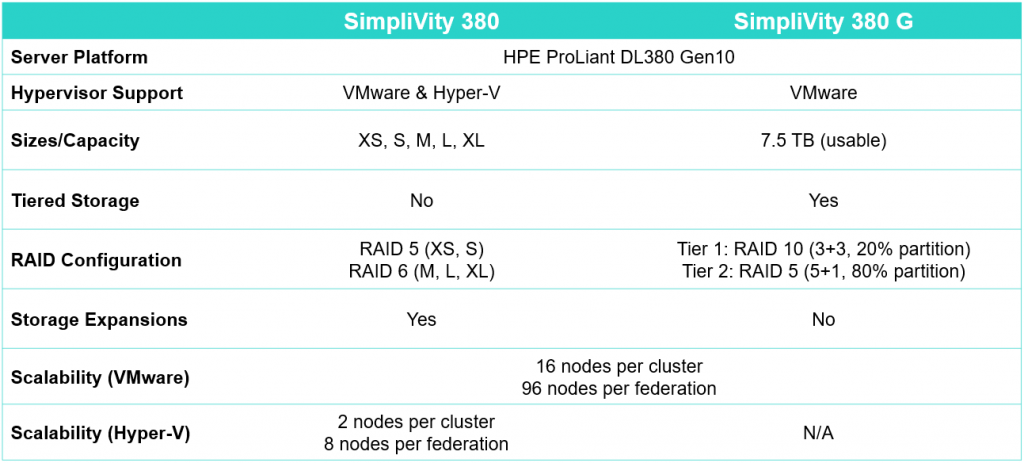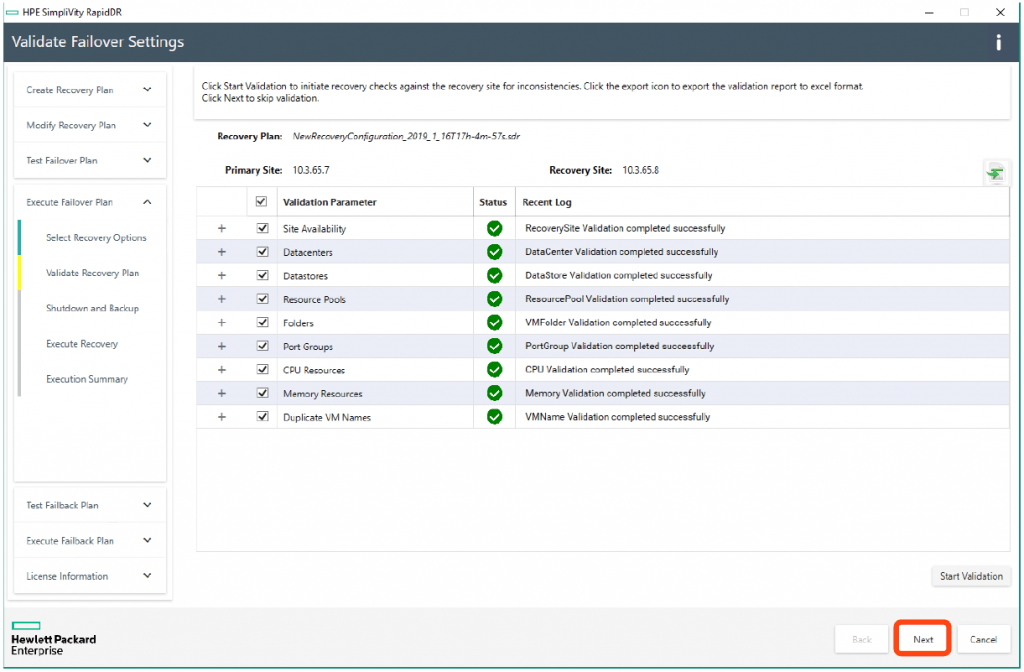2 weeks before HPE Discover in Las Vegas HPE started already with some new product announcements with new hardware and software updates in their HCI portfolio flagship called SimpliVity.
Software-optimized SimpliVity 380 G
The current SimpliVity portfolio consists of DL380 and Apollo 2600 models, where the DL380 solution has the unique OmniStack Accelerator Card, used to offload deduplication and compression and so maximize VM density.
The Apollo 2600 model does not feature this Accelerator Card and performs the data efficiency operations on the server CPU’s.
A combination of this is now used in the new SimpliVity 380 G model. There is no Accelerator Card, giving more available PCIe slots, for those customers who want to enable maximum GPU power inside the SimpliVity node.
Some more details on the similarities and differences between the 2 models:

Quickspecs show the storage layer holding 6 x 1,92TB SSD’s, which is different compared to the XSmall, Small, Medium, Large and XLarge models in the regular 380 models. Like in the 2600 model there are 6 SSD where a RAID10 and RAID5 layer is created and so 2 tiers… All hot data will be stored first on RAID10 before being offloaded to RAID5…
This setup gives 24% more usable capacity compared to a SimpliVity Gen10 model. Documentation also mentions a smaller OVC memory footprint, but I don’t have any details yet on how and why… Keep you posted on this.
Expanded Scale
- Max clusters per federation increased to 48: If your environment includes multiple smaller clusters, you can now easily take advantage of HPE SimpliVity’s 96-node federation scale. This is particularly important for ROBO and edge customers, for example, whose environments can include dozens of 2-, 3- and 4-node clusters.
- Heterogeneous cluster support: HPE SimpliVity now supports hybrid-flash and all-flash nodes in the same cluster or federation; any node can be mixed with any other regardless of media type, as long as they’re similar in capacity.
- Expanded support for 16 nodes in a cluster: Enhancements in HPE SimpliVity software version 3.7.8 extend support beyond all-flash HCI nodes to include non-HPE hardware running OmniStack software. This software update also includes vSphere 6.7 support for legacy (non-HPE hardware) nodes.
- Integration enhancements for Microsoft Hyper-V: HPE SimpliVity now supports Upgrade Manager in addition to CLI. GUI enhancements let you suspend and remove policies or hosts from a federation, and create custom events and alarms.
New software features
With VMware’s decision to move away from Adobe Flash, HPE engineers have built HTML5 functionality into HPE SimpliVity software version 3.7.8. This fast, reliable, modern interface lets you get work done where you need to, and on your schedule. Now you can manage HPE SimpliVity backup policies, view capacity and performance metrics, view objects (VMs, datastores, nodes), perform day-to-day operations, and set policies from any browser on your phone, tablet or laptop without a heavyweight client application.

Other software enhancements include:
- New support for VMware Instant Clone that accelerates adding desktops and removing them from existing pools
- Increased manageability of Horizon 7 virtual desktops and app delivery servers
- Additional Upgrade Manager support for non-HPE hardware-based systems
HPE SimpliVity RapidDR v3.0
HPE SimpliVity RapidDR is a DR orchestration tool for HPE SimpliVity platforms to automate the recovery of pre-configured set of virtual machines, from a production site to a recovery site and vice versa.

This new version 3.0 has some long-awaited features:
- Microsoft Hyper-V support: HPE SimpliVity RapidDR now supports automated recovery of HPE SimpliVity Microsoft Hyper-V option
- You can specify now any RPO based on the business needs
- 100 VM failover and failback can be completed within 30 minutes (with persistent DHCP network settings)
- Failback automation: Automated failback from recovery site to source site. A single DR plan covers now both automated failover and failback needs.
Some great new features are added to the HPE SimpliVity portfolio with these new announcements, curious of what’s coming soon. Keep on following this website!
Be social and share!
